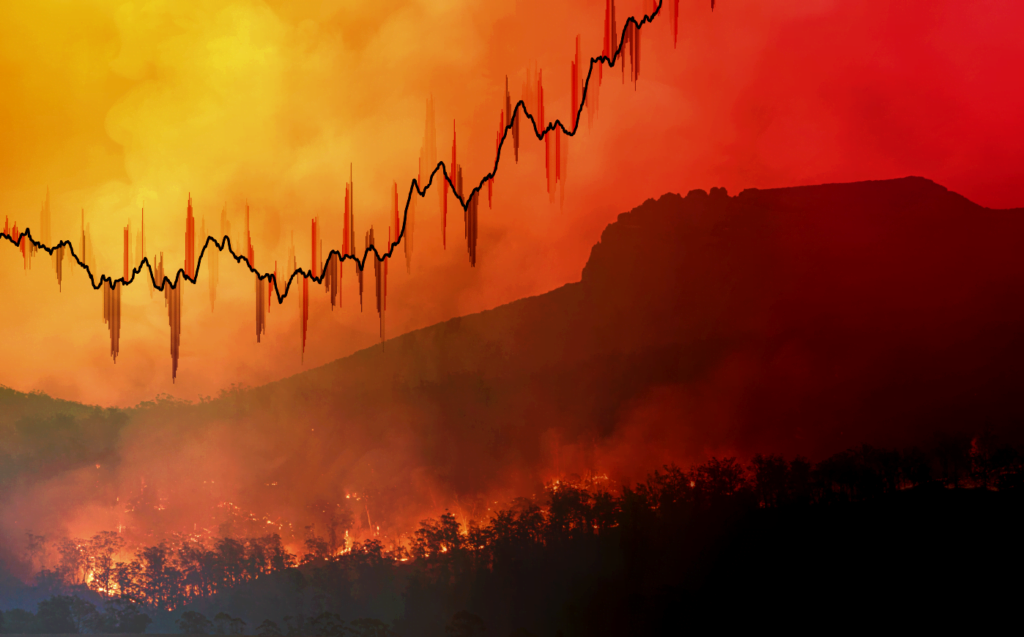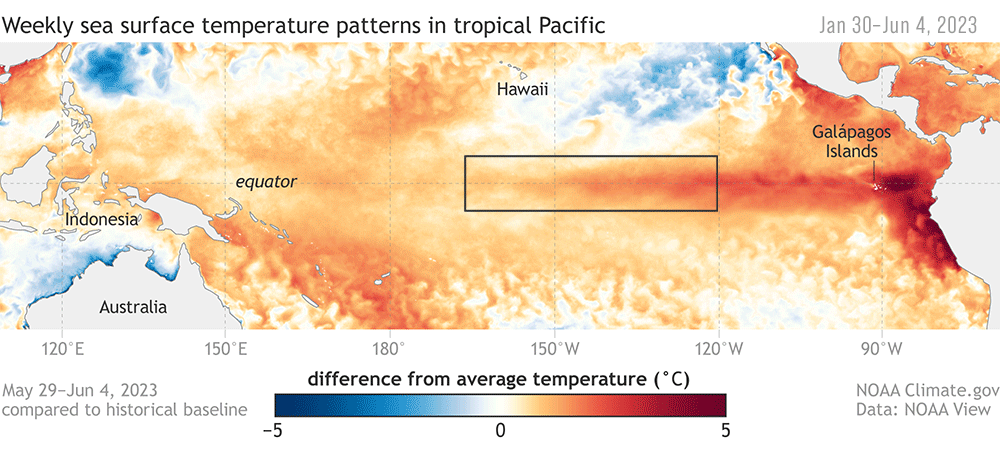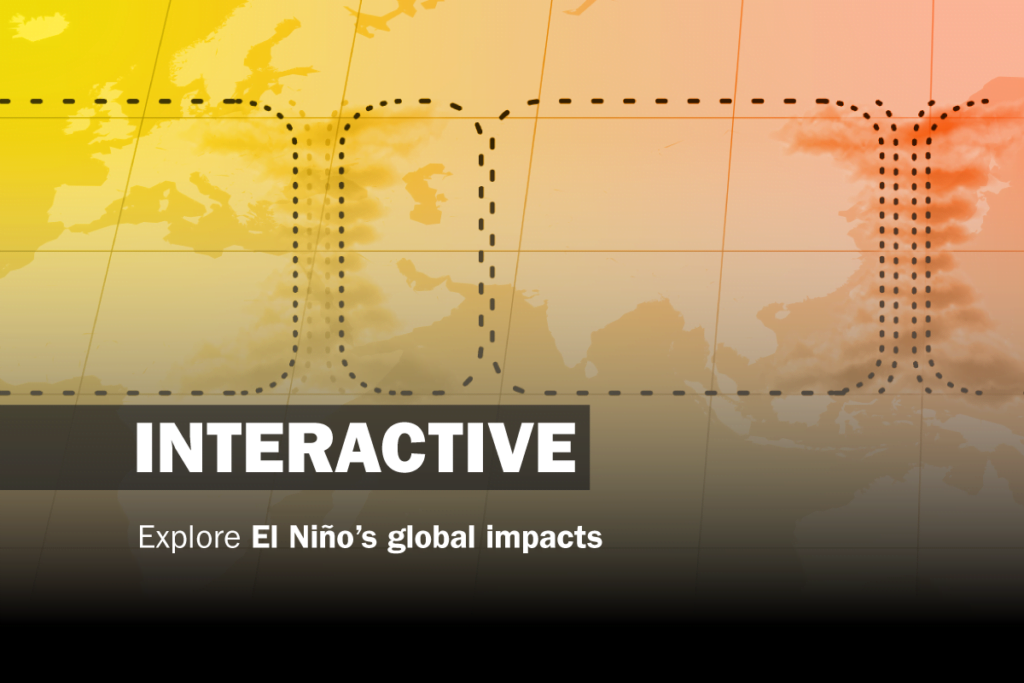Current evidence suggests both El Niño and La Niña could change significantly over the next 70 years, which will have consequences for how they impact us.
 El Niño typically causes drought in Australia, parts of southern Asia and Indonesia. : Unsplash: Josh Withers https://unsplash.com/license
El Niño typically causes drought in Australia, parts of southern Asia and Indonesia. : Unsplash: Josh Withers https://unsplash.com/license
Current evidence suggests both El Niño and La Niña could change significantly over the next 70 years, which will have consequences for how they impact us.
El Niño and La Niña events are likely to get stronger over the next few decade before possibly weakening towards the end of the century, new research predicts.
After three consecutive years of La Niñas, in early July the World Meteorological Organization declared an El Niño is underway, increasing the likelihood of hotter temperatures in many parts of the world.
Australia’s Bureau of Meteorology followed suit this week.
But over the next 70 odd years expect to see much changed El Niño and La Niña events, according to the results of simulations using climate models from all over the world. Such modelling is extremely complex though, so uncertainties still remain.
Increases or decreases in rainfall due to El Niño or La Niña events are projected to become more extreme, and these events will tend to be even more concentrated in the Southern Hemisphere summer rather than the rest of the calendar year.
These projections are consistent with observations of more extreme El Niño events in recent decades.
The models also predict that the warmest El Niño sea surface temperatures in the tropical Pacific will likely move more frequently from the east towards the central Pacific, and that stronger and longer La Niña events will follow El Niños.
These predicted changes are important because of the impacts El Niño and La Niña events have globally.
Locally in Australia, an El Niño typically causes bushfires or forest fires and drought, while a La Niña yields flooding rain. In Indonesia it results in a prolonged dry season.
Scientific research has shown that El Niño-related rainfall over the tropical Pacific Ocean consistently increases in a warming world regardless of whether El Niño strengthens.
However, the strength of El Niño and La Niña events is also vitally important in understanding how their impacts may change.
If El Nino gets stronger its rainfall impacts will be even more severe. This means even less rainfall in some parts of the world and even more rainfall in others.
Overall, recent research suggests that in many regions of the world current El Niño and La Niña impacts will be enhanced or become more extreme with warming.
How El Niño and La Niña are predicted to change with time is linked to the world’s CO2 emissions pathway — that means, which decisions humans take in terms of carbon emissions will be extremely important in how the events evolve in the future.
The climate models that were used to investigate the future of El Niño and La Niña are state-of-the-art computer simulations also used by the Intergovernmental Panel on Climate Change.
Climate scientists run these models out to the year 2100 using a variety of possible future carbon emission scenarios. These include scenarios in which emissions are reduced significantly as well as business as usual scenarios in which the current greenhouse gas emission trajectory is continued.
While climate model experiments provide a representation of how that future might look, any given climate model trajectory includes both the changes due to increasing greenhouse gases and the natural variability of the system.
The natural variability can be thought of similar to the butterfly effect where a small change can result in a different trajectory.
This natural variability and the changes due to greenhouse gases are intricately intertwined and are hard to disentangle.
Simulations named ‘large ensembles’ are run many times with the exact same carbon emission trajectory.
The climate variability within these large ensembles captures the butterfly nature of the system, whereas the average of all the ensemble members is the change due to the carbon emissions.
This approach allows for a clear disentanglement of the response of the system to increasing greenhouse gases and the natural variability.
A remaining challenge is understanding how exactly the warming pattern of the tropical Pacific will pan out over the near future.
This is the focus of a coordinated international research effort under the World Climate Research Programme.
Better understanding the biases in climate models, the time-dependent nature of the changes to El Niño and La Niña, and the mechanisms behind the changes is an active and important area of research.
Such research is vital to better understanding how regional climates will evolve in the future.
Dr Nicola Maher is a Research and DECRA Fellow at The Australian National University, Canberra. Her research uses global coupled climate models to investigate the dynamics, impacts and future changes modes of climate variability.
Dr Malte Stuecker is an assistant professor in the Department of Oceanography and the International Pacific Research Center at the University of Hawaiʻi at Mānoa. His research investigates various aspects of climate variability and change in the past, present, and future. These range from regional to global scales, from the tropics to the poles with much of his group’s work centred on the climate of the Pacific.
The authors’ research referred to in this article was supported by the Division of Atmospheric and Geospace Sciences, the National Oceanic and Atmospheric Administration, the Cooperative Institute for Research in Environmental Sciences, the Department of Energy, Labor and Economic Growth, the National Center for Atmospheric Research, the National Science Foundation and the Division of Ocean Sciences.
This article has been updated and republished after Australia’s Bureau of Meteorology declared an El Niño on 19 September 2023. It was originally published on 10 July 2023.
Originally published under Creative Commons by 360info™.
Editors Note: In the story “El Nino returns” sent at: 22/09/2023 17:36.
This is a corrected repeat.













